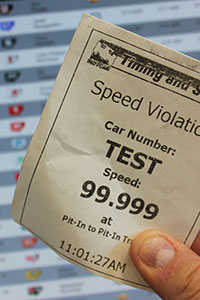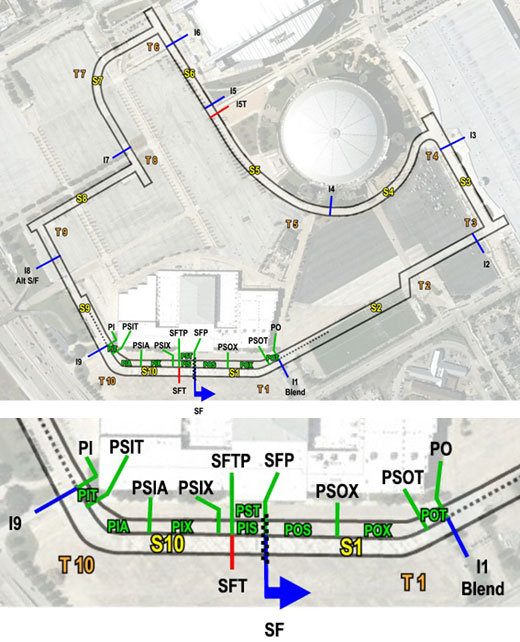Will Power acknowledges he can’t afford to squander potential championship points the remainder of the Verizon IndyCar Series season because of pit lane speed violations.
The Team Penske driver has incurred two drive-through penalties for speeding in the past four races, as measured by INDYCAR’s electronic equipment.
“I’m just going too hard," said Power, who enters the June 28-29 Houston doubleheader 39 points clear of teammate Helio Castroneves in the series standings. “I’ve got to stop it. I’ve got to just take it a bit easier.”
 According to other competitors, there’s no easy route when decelerating from 210 mph-plus on superspeedways to 60 mph in a matter of seconds. INDYCAR installs timing loops around tracks, including two at pit entrance and two at pit exit (see the Houston map below). When the transponder located in the same place on each car traverses those pit lane lines 60 feet apart, speed in the trap is recorded. Above the designated speed – 60 mph for ovals and 50 mph for most street/road courses -- and a ticket is printed in Race Control. It’s at the Race Director’s discretion to issue a warning (usually for first offense in practice) to a penalty.
According to other competitors, there’s no easy route when decelerating from 210 mph-plus on superspeedways to 60 mph in a matter of seconds. INDYCAR installs timing loops around tracks, including two at pit entrance and two at pit exit (see the Houston map below). When the transponder located in the same place on each car traverses those pit lane lines 60 feet apart, speed in the trap is recorded. Above the designated speed – 60 mph for ovals and 50 mph for most street/road courses -- and a ticket is printed in Race Control. It’s at the Race Director’s discretion to issue a warning (usually for first offense in practice) to a penalty.
The system, which has been in place since 2005, is rooted in safety for drivers and pit lane personnel. To reach the 60 or 50 mph, drivers activate a pit speed limiter on the steering wheel. Pressing it below the 70 mph threshold activates the engine control program to cut the RPMs and slow – or raise if below 60 mph – and maintain the prescribed speed.
Dale Coyne Racing’s Justin Wilson usually takes the more conservative approach, noting that it’s easier to make up a half-second on the next stint than recover from a speeding penalty. Any approach, he says, is a crap shoot.
“The tires have gone off at that stage and you’re pitting for tires and fuel and trying to judge how the car is going to slow down is really hard,” Wilson said. “Once you hit the brake pedal, it’s all over. You either guess right or wrong. It all happens further upstream when you say ‘OK, I can make it to here and brake,’ but then there’s no grip and ‘I’m not stopping.’
“When you’re pitting in practice, you’re doing five laps and coming in so you kind of get used to where you come in. In the race you’re doing 50 laps and the tires are completely worn out and have no grip, the decel lane is bumpy and the car is sliding so even stopping from 60 to zero in your pit box is difficult.”
At the most recent race on the Texas Motor Speedway oval, Power recorded a 25.7623-second (203.320 mph) trip of the 1.455-mile, high-banked oval on Lap 211 before pitting under green on Lap 213. He came in hot and was issued a drive-through penalty by Race Control that was served on the next lap. Wilson can empathize, saying that running at race pace and quickly decelerating on worn tires is exceptionally difficult.
“Texas is one of hardest because you’re wearing out the tires so much and you’re on that wide apron and the whole car is sliding,” Wilson said. “You’re trying to get as much speed as your can, but at some point you have to get on the brakes to slow down to the 60 mph. If you do overshoot, you lock up the brakes and you’re doing 63, 64 mph instead of 60 when you hit the line. That’s obviously a big problem.
“The trick is to hit it so you’re decelerating to 58 to 60 mph a split second before you hit the line and get back on it to hold it at 60 mph the whole way down. You hit the button when you’re decelerating so it catches you and holds you at 60 mph.
“It’s definitely not as easy as it looks on TV.”
